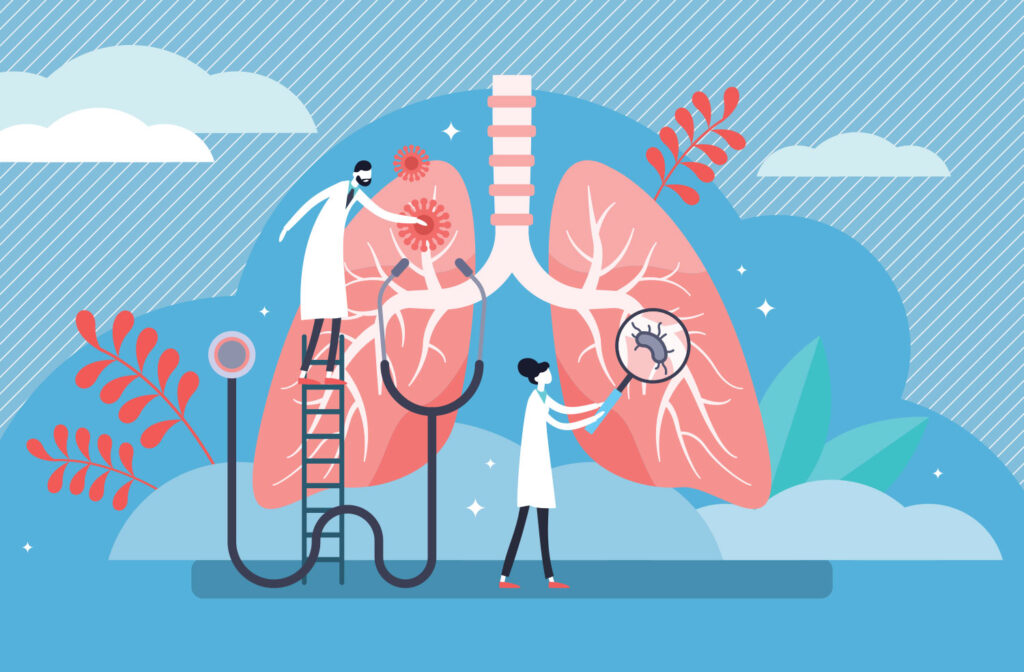Lung cancer is the leading cause of cancer death in the United States and the second-most common type of cancer overall, coming in behind only prostate cancer for men and breast cancer for women. But while people know that most cases of lung cancer are caused by smoking, they might not know that up to 20 percent of lung cancer cases occur in people in people who have smoked either rarely or not at all.
If these cases, up to 40,000 per year, are not caused by smoking, what does cause them? Researchers have identified a group of risk factors that include exposure to second-hand smoke, air pollution, asbestos, and radon, a gas that forms from the breakdown of radioactive elements that occur naturally in rocks and soil and can build up in basements. Another risk factor is family history of lung cancer. A third is the presence of a mutation in a gene known as the epidural growth factor receptor (EFGR) that causes cells to grow uncontrollably.
In general, physicians do not recommend screening for lung cancer in nonsmokers because it is relatively rare. Moreover, the possible risks associated with the screening procedure outweigh the unlikely possibility of finding cancerous growth.
While treatment of lung cancer in nonsmokers depends on its stage and aggressiveness, nonsmokers can in general expect to recover more quickly than smokers do because their lungs are healthier. Treatment can consist of surgery to remove any tumors, as well as targeted treatment for cases caused by genetic abnormality.
“Some good news is that targeted treatment for lung cancer caused by EFGR mutations is very effective,” said Kevin Becker, MD, Chief of the Division of Hematology and Medical Oncology in the Cancer Center at Maimonides Medical Center. “We get better results with this treatment than with chemotherapy or immunotherapy – it’s both more effective and less toxic. Most people taking these drugs feel little or nothing at all; it’s easier to take than diabetes and blood pressure medications.”
“I was driving to the hospital one day and passed a crowd of people, one of whom was a patient of mine who had Stage 4 lung cancer and was taking one of these targeted therapies, and it occurred to me that you couldn’t have picked her out as having the disease,” Dr. Becker said. “She was indistinguishable from the rest of the crowd. That’s how good the treatment has become.”
Some mysteries remain. For instance, researchers are currently investigating why lung cancer disproportionately affects Asian American women. Approximately 40 percent of this population diagnosed with lung cancer have never smoked, which is at least twice as common as in the general population. There seems to be a connection between Asian American women and EFGR mutations, but no one knows why such a connection would exist.
Despite the unanswered questions, treatment for lung cancer in nonsmokers is constantly improving. “The first targeted therapy pills came out in around 2004,” Dr. Becker said. “We are now giving people third-generation medication that work much better and have many fewer side effects.”




